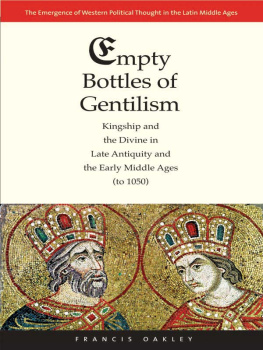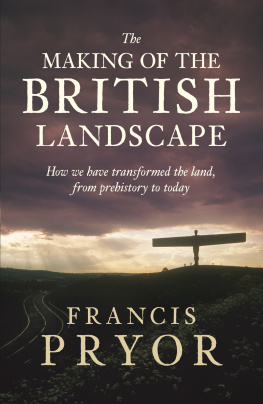Archaeology and the Medieval Period
I found the archaeological exploration involved in the writing of my previous book, Britain AD, so fascinating that I decided I had to carry the story forward in time. By comparison with Britain AD, I have fewer axes to grind in this book. This is probably because hypothetical mass-migration and invasion are not contentious issues after the three centuries that followed the Roman withdrawal of AD 410.
In this book I want to take an archaeological look at medieval Britain. The word medieval can be taken to mean many things. Here I will use it as a chronological label, which for present purposes begins around AD 650, the end of the period known to archaeologists as the Early Saxon. The finish date is harder to pin down, and later we will see that there are good reasons for this, but here I will follow most archaeological opinion by selecting the mid-sixteenth century, say 1550, and the death of Henry VIII (1547).
This is not a textbook, nor is it a book of social or political history. If you are looking for an authoritative account of the Tudors, the Plantagenets or the Peasants Revolt, then this is not it. This will be what used to be called a narrative history except that there is more here about archaeology than about history. I have made greater efforts to explain fields and hedges, waterfronts and trade than the achievements of individual rulers. Another way of describing a narrative account is to see it as a diary or journal of the authors own exploration of a particular subject. That, I think, is closer to what I have attempted to do.
Being a prehistorian of the Neolithic, Bronze and Iron Ages, I am most familiar with the sites and objects of the last four millennia BC, as revealed by excavation. This experience gives me an unusual perspective on medieval times. As we will see shortly, I tend to view the past in the long term. I am more concerned with the processes of social and political change than with a detailed chronicle of the events that marked the progress of those changes. To use a phrase that is currently popular, this book is an attempt to write a sort of joined up archaeology, where the changes seen in the ground can be related to their causes in the ancient world. This approach is perhaps easier for historians, who are good at identifying key events, their causes and consequences. Archaeologists, on the other hand, have found that the techniques available to them make the identification of historical events a problem.
One example will suffice. We know for a fact that Boudica, the rebellious Queen of the Iceni, nearly threw the occupying Roman troops out of Britain during her uprising in AD 60 and In the course of that revolt her forces set fire to parts of towns in eastern England. Accordingly, when archaeologists working in that region find evidence for burning around the middle of the first century AD , they often attribute it to the Boudican revolt. In that way the evidence for large-scale destruction is increasing every year. But in antiquity, just as today, fires are not always started deliberately. Very often they happen by accident, and the archaeologist is presented with the near-impossible task of differentiating between Boudica and, say, the results of a bakery fire. To make matters worse, nowadays the press are always on the prowl for news stories, and fresh evidence for the heroic warrior queens prowess always makes excellent copy.
This inability to tie down specific historical events has led archaeologists to turn their attention to the longer-term processes that lay behind the development of society in various parts of the world. Today the profession is branching out. There is a proliferation of fresh approaches to the past. Some, the so-called culture-historicists, stay with historical reconstruction. Others (processualists) prefer to work with problems to do with social process; their way of working is heavily influenced by anthropology. But there are many other ways of doing archaeology today, ranging from Marxist to cognitive to neo-structuralists and various strands of post-processualists, who take their ultimate inspiration from post-modern philosophers such as Derrida.their ideas, deconstruction for example, have proved very useful. I believe this diversity of approach gives our discipline strength and resilience. My own approach is a hybrid of at least three of these methods I think.
The colourfully misnamed Dark Ages mark a return of sorts to prehistory, so far as the archaeologist is concerned. During the half century or so of post-Roman times and the subsequent Early Saxon Period ( AD 450650), reliable written documents are rare, and provide us with far less information than the abundance of new archaeological discoveries, whose sheer quantity today is almost overwhelming. Whether or not you accept the argument of Britain AD, that the indigenous population of Britain did not fall victim to Anglo-Saxon ethnic cleansing, as the distinguished historian David Starkey suggested in the first episode of his television series Monarchy (2004), it is hard to deny that archaeology is revealing a huge amount about Dark Age Britain. But what about the subsequent periods: does archaeology have a role to play in times when documentary evidence becomes more abundant?
There was a rapid increase, indeed explosion would scarcely be an exaggeration, of written documentary sources in the mid-thirteenth century. These documents are mainly about day-to-day transactions, to do with trade, dwellings and land tenure. They are of enormous importance to the study of the way people lived their lives, in both town and country. But do they allow us to paint a full picture of life in the Middle Ages? The archaeologist Paul Stamper thinks not: traditionally, few historians exhibited any interest whatsoever in material culture, whether it be the layout of a villages fields, the design of its houses, or the range of their contents. That was especially so with regard to peasant society, which was assumed to be (in every sense) rude, crude and unworthy of scholarly investigation. He then explains that most historical records are terse, factual memoranda. They throw little light on how or why certain things took place. Archaeologys ultimate access to a much larger dataset, and to one with a degree of detail denied to the historian, makes the investigation of explanation far more feasible.

















